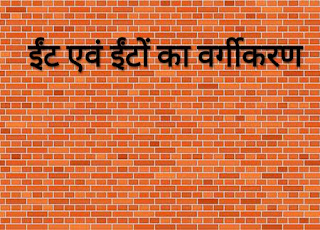VERNACULAR ARCHITECTURE IN INDIA AND IT'S FEATURES
Written by - Monu Dalal
Vernacular Architecture In India :-
The term "Vernacular Architecture" is defined as a traditional method of building a structure by using local materials. It is constructed by local builders. It is the most widespread form of building. Some points about its definition should be considered are:
- It is informal.
- Mostly structured in rural areas of country
- Designed to meet the needs of local people
- Locally available building material
- It reflects the rich diversity of India
Vernacular Architecture also contains the art, architecture, and oral traditions of tribal villages of cultural India.
Factors :-
Factors of Vernacular Architecture of India are: (1) Climate : varies from scorching sun in gangetic plains to tropical in South and from dry cold Leh to warm and damp north-east.
(2) Geography : vary from hilly terrain of the Himalayas and Kashmir to flats of Deccan and from damp Assam to dry Punjab.
(3) Availability of Local Materials : red leterite stone soil in Goa and Karnataka, clayey soil in North India, and Bamboo in North East etc.
(4) Anthropology : it is the study of physical and social characteristics of humanity through the examination of geographical distribution, history and culture etc.
(5) Culture : it is one another factor which contains art, architecture and tradition of specific area in construction.
(:: Mud House )
Regional Variation in Vernacular Architecture :-
Regional variation depanding upon different regions material, techniques, climate, tradition etc. And Different variations are :
- Building material depends on location.
- In hilly areas stone, ashlar are available, these can be patched with mud mortar to form walls
- Houses on hilly usually have two stories, with livestock living on the ground floor, often a verandah runs along the side of the house.
- On the flat lands, houses are usually made of sun baled bricks and mud then plastered outside and inside with a mixture of cow dung and mud.
- Bamboo is widely used for all parts of home as it is flexible.
Categories :-
The architecture can be divided into three categories as it has evolved through skillful craftsmanship of local builders.
1. Kacha : In Kacha type building is made of natural materials such as bamboo, mud, grass etc and it is also a shorlived structure. Material cheap and easily available.
2. Pakka : Structure made from materials resistant to wear, such as forms of stone and brick, metal and other durable material. It is expensive to construct as the materials are costly.
3. Semi-Pakka : Combination of Kacha and Pakka style.
"Architecture as always evolves originally as the needs and resource of people change".
Features In Vernacular Architecture of India :-
- Jharokha
- Rajasthani Architecture
- Overhanging balcony
- Manglore tiled sloping roof
- Slope roof tiles and thatch to draw of and channel rain.
- Houses in Assam built on slits to encounter the damp ground.
- Houses in Punjab has white wash on outside walls helps to cool down the summer heat.
- Kashmir house boats made of intrically carved cedar Wooden panelling and large windows to provide views of snow-covered peaks of Himalayas.
- Courtyard with pillared corridors that lead to individual rooms, it is the main activity space.
- And village settlements in Uttarakhand, it is characterized by houses of stone, timber, mud with thick wall of rubble masonary. On ground floor animal shelter is provided and on first floor space for living. The heat given off by mulch animals heats the house above.
"Our Architecture reflects truely as a mirror" - Louis Henri.







Thank you
ReplyDelete